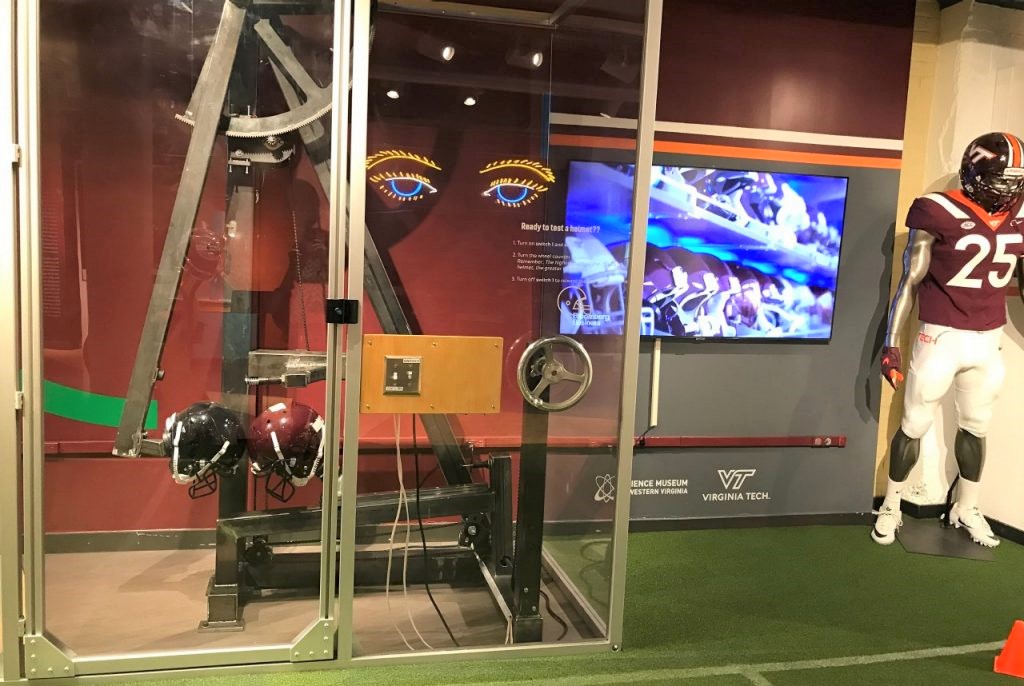 From flying snakes to honey bee habitats, the newest exhibits at the Science Museum of Western Virginia in Roanoke give visitors the opportunity to explore the university’s discoveries through a series of interactive opportunities.
From flying snakes to honey bee habitats, the newest exhibits at the Science Museum of Western Virginia in Roanoke give visitors the opportunity to explore the university’s discoveries through a series of interactive opportunities.
The museum and Virginia Tech have collaboratively developed four new museum exhibits inspired by the work of the university’s students and faculty. Through a unique partnership, Virginia Tech has the opportunity to share its discoveries with the public, while museum visitors get hands-on experience with innovative technologies and exciting scientific discoveries. Photos and short biographies provide a glimpse at the scientists behind the work.
Phyllis Newbill, associate director of educational networks for the Center for Educational Networks and Impacts (CENI), serves as the liaison managing the relationship between Virginia Tech and the science museum connecting faculty, students, and staff from both organizations to create new collaborative opportunities and sustain the partnership.
“The relationship is rich and growing. It is really a win-win,” said Newbill. “The museum gets fresh new exhibits highlighting current scientific research. Virginia Tech researchers get access to the museum’s 60,000 annual visitors so their research can make a broader impact. Four new exhibits opened this year, adding to the three already on the museum floor. More are in design now.”
These are the four new museum exhibits:
“Snakes can fly?!”
Based on the research of Jake Socha, a professor in the Department of Biomedical Engineering and Mechanics, and his collaborators, this exhibit explores the science of gliding animals. Visitors can experiment with a wind tunnel to see how different shapes react to air currents. With support from the Institute for Creativity, Arts, and Technology (ICAT), Socha and his team used the motion capture capabilities of the Cube to better understand flying snake locomotion. This exhibit was funded by the National Science Foundation.
“Virginia Tech Helmet Lab”
Highlighting the research of the Virginia Tech Helmet Lab, museum visitors can crank up a helmet to simulate the impact studies done in the lab and see and touch the insides of many different helmet styles. Led by Stefan Duma, director of the Institute for Critical Technology and Applied Sciences, and Steve Rowson, associate professor in the Department of Biomedical Engineering and Mechanics, the lab studies the effectiveness of helmets at protecting heads from extreme force. Barry Miller, director of outreach for the lab, collaborated with museum staff to create an exhibit that brings science and sport together in an engaging, active way.
“Propolis”
Featuring the creative technologies master’s thesis work of Renee Alarid, associate director of creative services at the Moss Arts Center, this exhibit was created to help children better understand honey bees’ contributions to the economy through audio and video elements that explore their lives and habitats. Visitors can get up close with the geometries of beehives as projected bees move in and out of the hive.
“Microorganisms: The Good, the Bad, and the Beautiful”
This exhibit is the result of work by Dana Hawley, professor of biological sciences, exploring how microorganisms affect songbirds. Microscopes, samples, and photomicrographs let museum visitors magnify the tiny and fascinating world of microorganisms. This exhibit was funded by the National Science Foundation.
Three other exhibits created by Virginia Tech researchers — “Plasma,” “MirrorCraft,” and “Dense Space” — were installed in previous years and are still available for visitors to explore.
— Peyton Manfre contributed to this story




